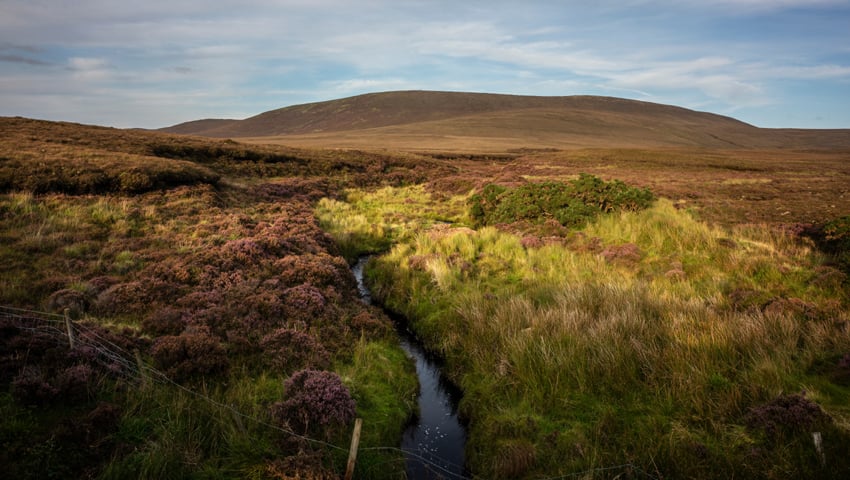The new figures suggest peat soils cover 13 per cent more area than previous peat soil maps, which are useful in land use planning – with peat soils critical in absorbing greenhouse gases (GHG) and helping to meet some of Ireland’s most pressing environmental challenges.
The new map includes areas of shallow peat soils, which, crucially, also contain large stocks of soil carbon.
As recommended by the United Nations Global Peatlands Initiative, the researchers, from Trinity, the University of Galway, and Queens University Belfast, included these soils in the new peat map. To do so, they adopted a broader definition of peat soils by including soil material containing 8.6 per cent of organic matter or more that has accumulated to at least 10cm.
Dr Louis Gilet, from Trinity, is the lead author of the study. He said, “Our technique involves continually updating these peat soil maps as new data become available, and this new IPSM can now be used confidently and contribute to a more precise identification of the location of peat soils across Ireland.
“The Irish Peat Soils Map can thus help to accurately implement regulations concerning carbon-rich soils and climate change mitigation, while informing management decisions related to other key sustainability issues such as land use planning, biodiversity management or water regulation.”
Historically, interest in peat soils primarily focused on economic productivity, via extraction, or conversion to agriculture or forestry, but in recent years there has been a growing appreciation of their role in regulating environmental processes as well as providing recreational, educational, scientific, and cultural value.
Dr Terry Morley, from the University of Galway, said, “Peat soils are important because they help the country meet national and international targets to reduce GHG emissions and also play a major role in regulating stream flow, water quality, or providing habitat for ecologically sensitive species.”
Dr Raymond Flynn, from Queen’s University Belfast, said, “This map changes our approach to mapping peat soils from the traditional approach concerned with agronomy to one where we can now more reliably focus on the role of peat and peat soils in environmental processes.”
Dr John Connolly, from Trinity, added, “Peatlands hold a significant percentage of Ireland’s total soil organic carbon stock, but they have been severely degraded over the past 200 years due to land use change and associated human activity, resulting in increased emissions from both deep and shallow peat. As a result, accurate identification, mapping and management of peat soils is essential for programmes that aim to reduce global greenhouse gas emissions and to improve biodiversity in the Irish landscape.”
An adaptive mapping framework for the management of peat soils: A new Irish peat soils map
